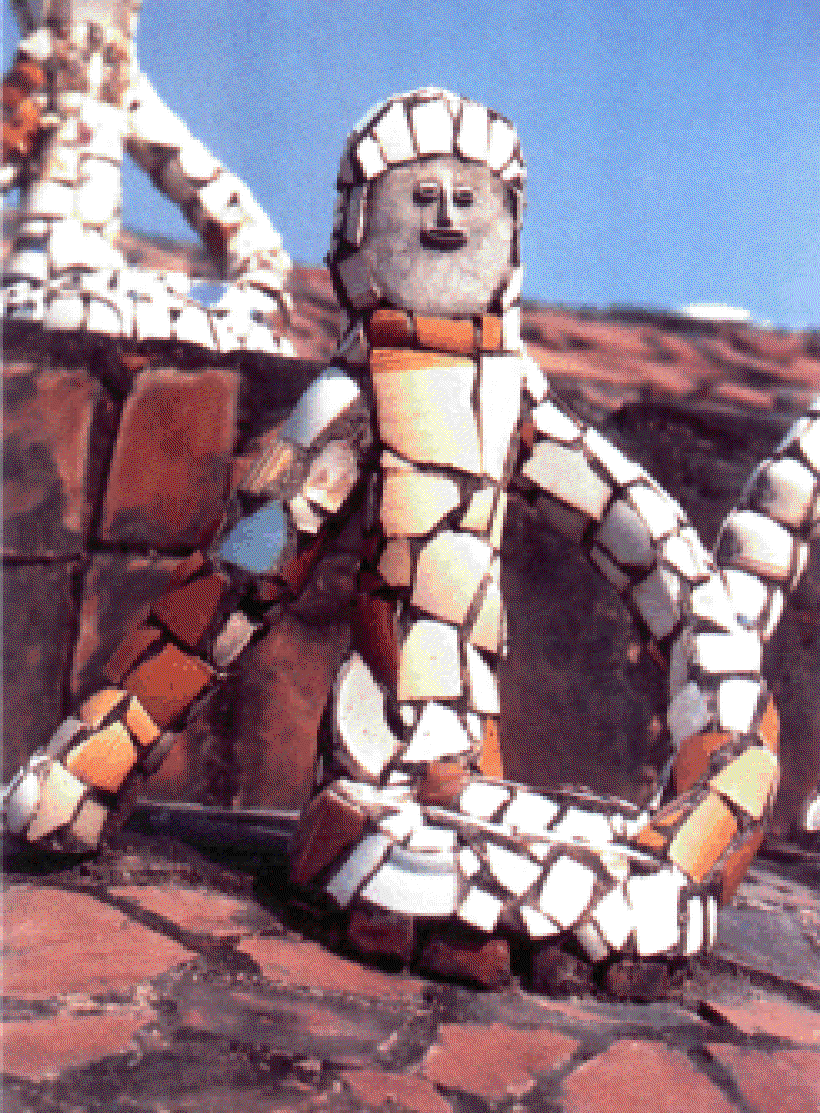An Earth Day Fable
Home / Science for Kids / Planet Earth for Kids / An Earth Day Fable
Indians are masters of junk. And out of junk they produce masterpieces. One such junk master is the sculptor Nek Chand who fashioned his sculptures from waste. The story goes that Nek chand was once invited to America to fashion sculptures, works of art out of waste. Nek Chand came back disillusioned and glum complaining that their junk was not so good, that its feel and smell was so alien.
If Nek Chand turned masterpieces out of junk (see picture below), the slum is a craft built around junk. Every citizen of a slum is a master of recycling. As an Indian scientist once put it “waste is the only resource of a wasted people”. For a slum, one man’s waste is another man’s lifestyle. We were masters of recycling long before it became fashionable.
But, sometimes, our art forms become lethally ironic. This becomes clearest in our relation to plastic. According to the Central Pollution Control Board (CPCB), New Delhi, India’s growth rate of plastic is the highest in the world. Like a virus, plastics have infiltrated every sector of the economy, from agriculture and telecommunications to consumer goods.

Yet, what is intriguing is the way we delay the disposal of plastic waste. Unlike in the west, we happily use it the second and a third time. The recycling industry in India is a Rs. 2000-crore economy. Accompanying it is a network of rag pickers and waste collectors. The figures speak for themselves. If Europe recycles seven per cent of its plastic waste, China 10 and Japan 12 per cent, India recycles 60 per cent of its plastic waste.
Parivesh, the CPCB bulletin even talks of a new type of worker — the plastic mechanic who repairs buckets by fusing them. If English newspapers sell at Rs. 4 or Rs. 5 a kg and beer bottles at Rs. 2.50 per kg, plastic waste sells at Rs. 12-15 per kg. The tragedy begins here.
Recycling of plastic waste only postpones the problem of disposal; it does not solve them. One has to visit Delhi’s Mundka village to understand this.
Mundka is a village, which collects waste from hospitals. Here one sees waste mounds of glucose bottles, urinary bags, surgical gloves and syringes. All these are one-time use items which must be crushed and disposed of. But here everything is collected and recycled. A full cottage industry has grown around the use of such waste. The rag picker who is the hero of recycling becomes the villain of the fable.
Worse still, once plastics are reused they are abandoned by the ragpicker. Take plastic bags. Once they are recycled, they have little economic value. They are completely ignored by the kabadiwala and condemned along with a mineral water bottle. The CPCB claims that they are littered in dumps and eventually choke up our sewers and storm water drains. The question we must ask on Earth Day – Is all recycling healthy?
Or is one man’s recycling another man’s death warrant? Ecology is full of such ironies.
The writer is a well-known anthropologist.
515 words |
5 minutes
Readability:
Grade 6 (11-12 year old children)
Based on Flesch–Kincaid readability scores
Filed under: planet earth
Tags: #india, #waste, #plastics, #sculptures, #nek chand, #plastic waste, #recycling
You may also be interested in these:
Indians: Masters of Junk
Injured Deer Lands on Dinner Plate
Holi – The Colour of Fun is Red, Blue, Green
Papier mache Club
Festive Layers